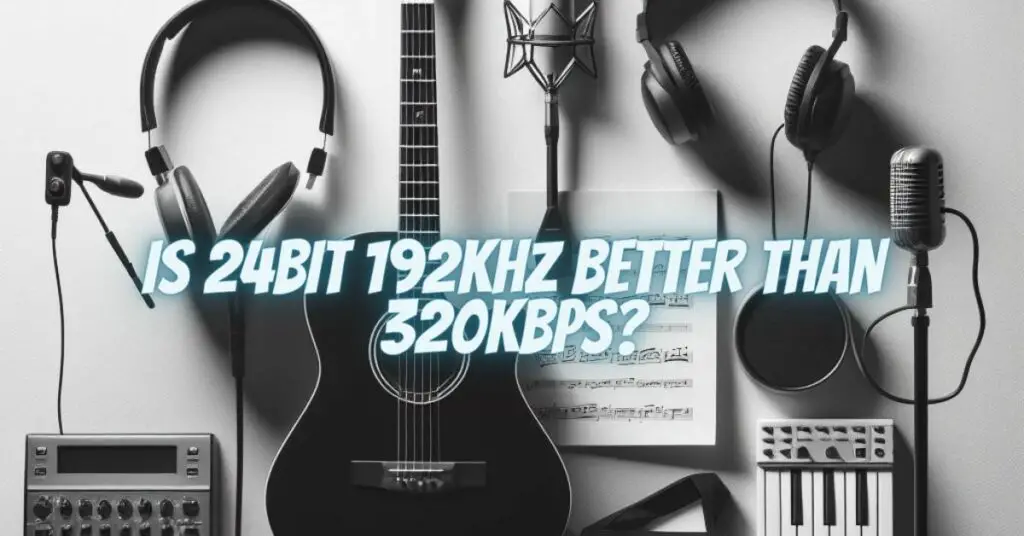The debate over audio quality between 24-bit/192kHz and 320kbps is a hotly contested topic among audiophiles and music enthusiasts. Proponents of high-resolution audio (24-bit/192kHz) argue that it offers superior sound quality, while others contend that the difference is negligible, especially when compared to the convenience of 320kbps. In this article, we will explore the factors that differentiate these formats and help you understand the nuances of the audio quality debate.
Diving into the Formats
- 24-bit/192kHz: This format is often referred to as high-resolution audio or “hi-res.” It represents audio sampled at 24 bits with a sample rate of 192,000 Hz. This is significantly higher than the standard CD quality of 16-bit/44.1kHz.
- 320kbps: 320kbps (kilobits per second) is a bit rate used for encoding audio into the MP3 format. It is considered a high-quality setting for MP3 compression.
Key Factors Influencing Sound Quality
- Bit Depth: The bit depth (24-bit in high-resolution audio vs. 16-bit in CD quality) refers to the number of bits used to represent each sample of audio. A higher bit depth provides more dynamic range and precision in audio representation.
- Sample Rate: The sample rate (192kHz vs. 44.1kHz in CD quality) determines how many samples of audio are taken per second. A higher sample rate captures more detail and high-frequency information.
- Audio Source Quality: The original source recording quality greatly influences the perceived difference between high-resolution audio and 320kbps. Well-recorded music benefits more from high-resolution formats.
- Listening Equipment: The quality of playback equipment, such as headphones, speakers, and digital-to-analog converters (DACs), can significantly affect the ability to discern differences between formats.
- Listening Environment: The acoustic characteristics of your listening space, background noise, and your listening environment play a role in your ability to perceive audio nuances.
The Audiophile Perspective
Audiophiles who value the purest and most accurate representation of sound often prefer 24-bit/192kHz for the following reasons:
- Increased Detail: High-resolution audio captures more detail in the music, particularly in complex compositions and high-frequency content.
- Dynamic Range: The expanded dynamic range allows for subtler nuances in music, preserving the original sound without clipping or distortion.
- Future-Proofing: As audio technology evolves, high-resolution audio may become more relevant, future-proofing your music library.
The Practical Perspective
For most casual listeners and those concerned with convenience and storage space, 320kbps MP3 offers several advantages:
- Efficient Storage: MP3 files at 320kbps offer a good balance between sound quality and file size, allowing you to store more music on your devices without worrying about limited storage.
- Compatibility: MP3 files are universally compatible with various playback devices and platforms, making them versatile and convenient for everyday use.
- Perceived Quality: The difference in audio quality between 24-bit/192kHz and 320kbps may not be discernible to the average listener, particularly in less-than-ideal listening environments.
The debate between 24-bit/192kHz and 320kbps is a matter of priorities and personal preferences. Audiophiles who place a high value on the utmost sound quality and want to future-proof their music libraries may opt for high-resolution audio. However, for most listeners, the convenience and practicality of 320kbps make it a more attractive choice. The key is to enjoy your music, regardless of the format, and recognize that the difference in audio quality between these formats may be subtle in everyday listening.

